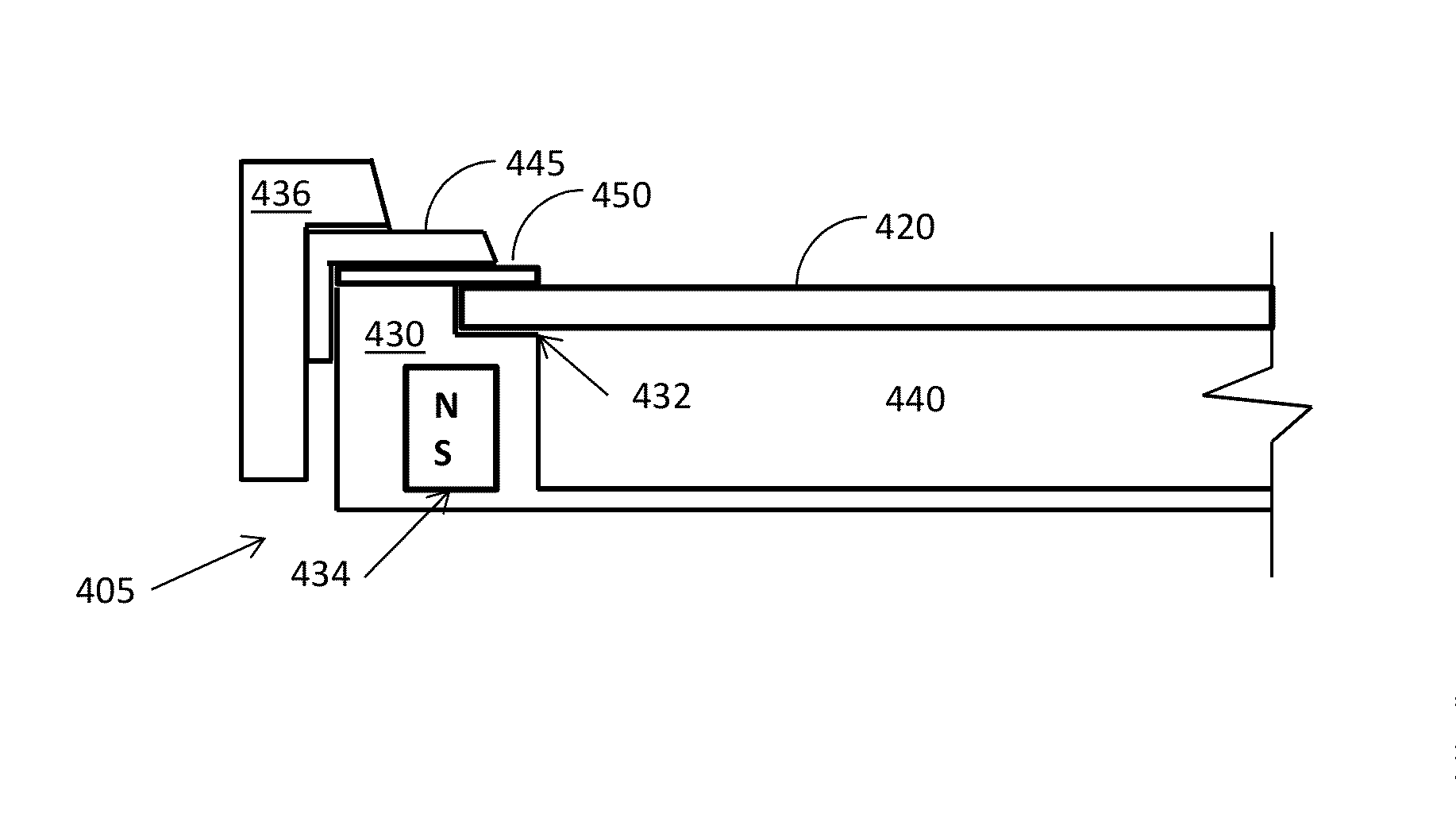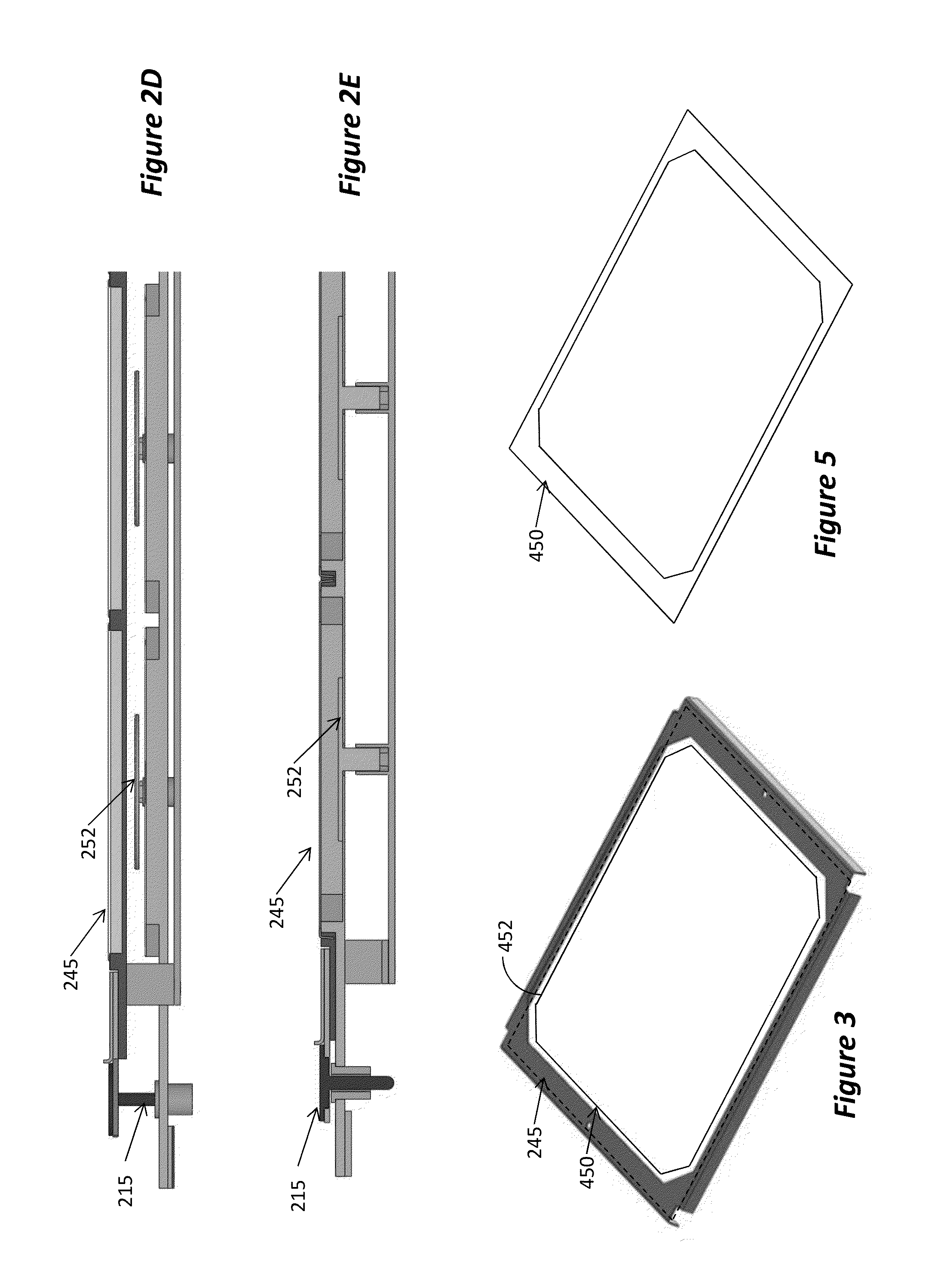Dual-mask arrangement for solar cell fabrication
a solar cell and dual-mask technology, applied in the field of mask fabrication, can solve the problems of mask warping, loose contact with wafers, and many challenges of mask use, and achieve the effect of easy and fast loading and unloading of substrates
- Summary
- Abstract
- Description
- Claims
- Application Information
AI Technical Summary
Benefits of technology
Problems solved by technology
Method used
Image
Examples
Embodiment Construction
[0028]While in traditional semiconductor manufacturing wafers are generally processed independently, in solar fabrication multiple wafers are fabricated simultaneously. For simplicity, the following will be described with respect to processing of three wafers simultaneously; however, it should be appreciated that the embodiments may be extended to any number of wafers being processed simultaneously.
[0029]FIG. 1 illustrates a multi-wafer carrier according to one embodiment, which is not configured for mask processing. That is, in the fabrication of solar cells, some of the processing steps do not require masking of the wafers. In such cases, the carrier of FIG. 1 can be used. Carriers which implement the dual-mask arrangement will be described below with reference to the remaining Figures. Thus, in various embodiments, processing steps that do not require masking would be performed using the carriers of FIG. 1, while processing steps that require masking would be performed sing the c...
PUM
| Property | Measurement | Unit |
|---|---|---|
| Fraction | aaaaa | aaaaa |
| Thickness | aaaaa | aaaaa |
| Thickness | aaaaa | aaaaa |
Abstract
Description
Claims
Application Information
 Login to View More
Login to View More - R&D
- Intellectual Property
- Life Sciences
- Materials
- Tech Scout
- Unparalleled Data Quality
- Higher Quality Content
- 60% Fewer Hallucinations
Browse by: Latest US Patents, China's latest patents, Technical Efficacy Thesaurus, Application Domain, Technology Topic, Popular Technical Reports.
© 2025 PatSnap. All rights reserved.Legal|Privacy policy|Modern Slavery Act Transparency Statement|Sitemap|About US| Contact US: help@patsnap.com



